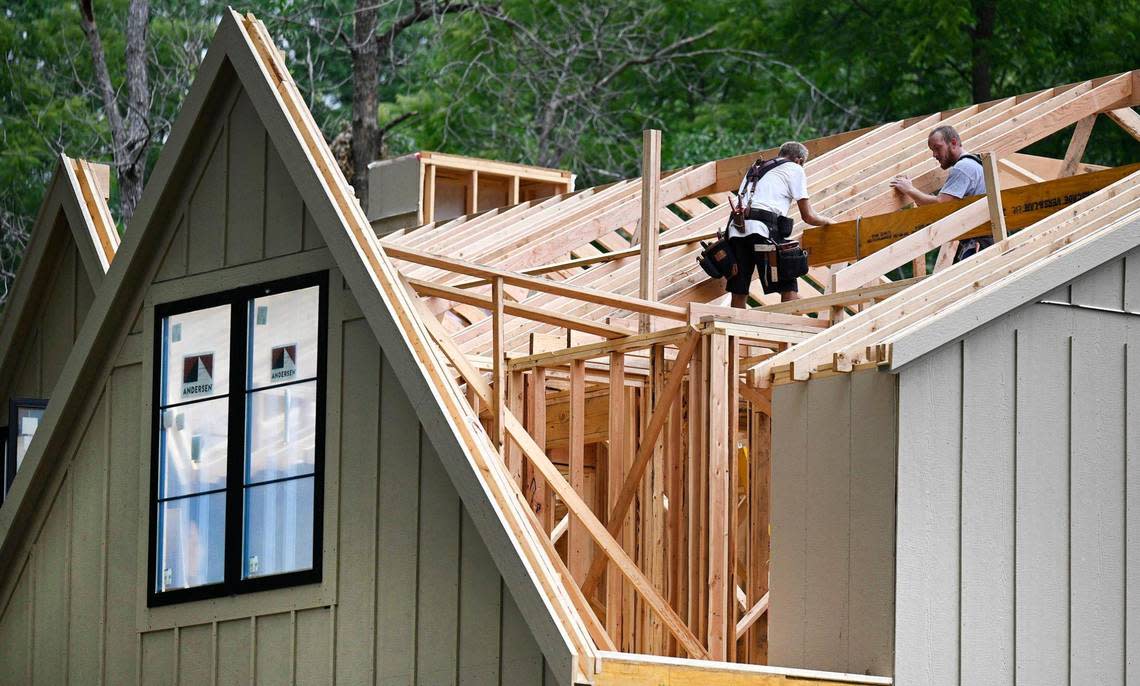After 2 years of fighting, Johnson County city allows more apartments. But there’s limits

After two years of arduous debate, packed with resident protests and political battles, the Prairie Village City Council this week finally amended zoning laws to allow for more housing — but only in limited circumstances.
While the move still drew opposition, the approved changes are significantly scaled back from earlier ideas that sparked heated protests, a court fight and a contentious election. After a few hours of discussion and public comments, the council on Monday voted 12-1 to amend its zoning laws.
And some city officials appear ready now to end and move on from the debate, which stemmed from an effort to enable more affordable housing in the city, but morphed into an intense political feud.
“The issue is settled now, and the city will focus on other business,” Councilman Ian Graves wrote in a Facebook post.
The most notable change the council approved on Monday is the city will now allow residential projects in commercial areas, but only above or behind retail or office space, with several restrictions. Projects would be limited to two stories, such as adding apartments above a one-story commercial space.
Since Prairie Village is largely built out, most existing opportunities are for redevelopment. The idea would theoretically offer a developer the chance to add housing to existing commercial buildings, such as along 75th Street, or at the Village Shops or Corinth Square shopping centers.
Doing so previously would require the developer to make a rezoning request, which requires a lengthy process through City Hall with public hearings and council votes. Now if a developer meets all of the requirements under the new zoning code, projects would go through a less strenuous process with a neighborhood meeting and planning commission approval, said Chris Brewster, a city planner.
That has been a point of contention among many residents and some council members, who argued the rezoning process allows for more public input. Several residents spoke during public comments pleading with the council to reject the change.
“I am against adding residential to commercial areas. I think it’s a blanket approach,” said Councilwoman Lori Sharp, who won election in November with the support of residents who have opposed the city’s efforts to diversify its housing stock. She argued the change, “takes a lot of residential voice out of the decision.”
Graves, on the other hand, said he was supportive of allowing housing in commercial districts.
“Along 75th, down off of 95th, even in the Village Shops, you see that single-story retail is not doing as well as it has over the past two or three decades. ... The turnover rate has not been great. The vacancy rate has not been great,” he said, adding that “as things like retail and commerce move online, we need to diversify our land use portfolio.”
Johnson County’s housing crisis
The zoning debate started with city officials considering how to address the shortage of affordable housing for working residents and seniors in the northeast Johnson County city where homes on average sold for $616,988 last year, according to the county appraiser’s office.
Officials initially studied whether it could make it easier for developers across the city to build duplexes, row houses and smaller apartment buildings — cheaper options that are often restricted by zoning laws across the county, leading to a shortage of options other than single-family homes and large apartment complexes.
But the talks set off a firestorm, with many residents protesting ideas they worried would lead to multi-family developments crowding their neighborhoods. That debate escalated as a group of opposing residents passed around petitions, aiming to let residents vote on restricting rezoning, changing the city’s form of government and halving the size of the council — an effort that resulted in a court fight and did not end up going anywhere.
Listening to protesting residents, the council agreed to significantly limit its consideration of zoning changes. Members committed to maintaining the status quo in residential neighborhoods, a main point of concern. It also decided to ax any discussion of making it easier for homeowners to build accessory dwelling units, also called “granny flats,” in their backyards.
The council focused mostly on commercial zones, leading to Monday night’s decision. Councilwoman Inga Selders, the lone “no” vote, said she opposes a “blanket change” allowing housing in commercial zones, and made a motion to remove that piece from the broader zoning code updates. That motion failed with a 7-6 vote.
The council also agreed to code updates that set standards for developers to adhere to when they submit mixed-use project plans. Brewster said the city has generic standards in place, but the change would require developers proposing mixed-use projects to meet more specific size and height requirements. Such proposals would be subject to council approval.
Council members approved the code changes after making two amendments, limiting the maximum building height to three stories, plus increasing the required green space on a lot.


